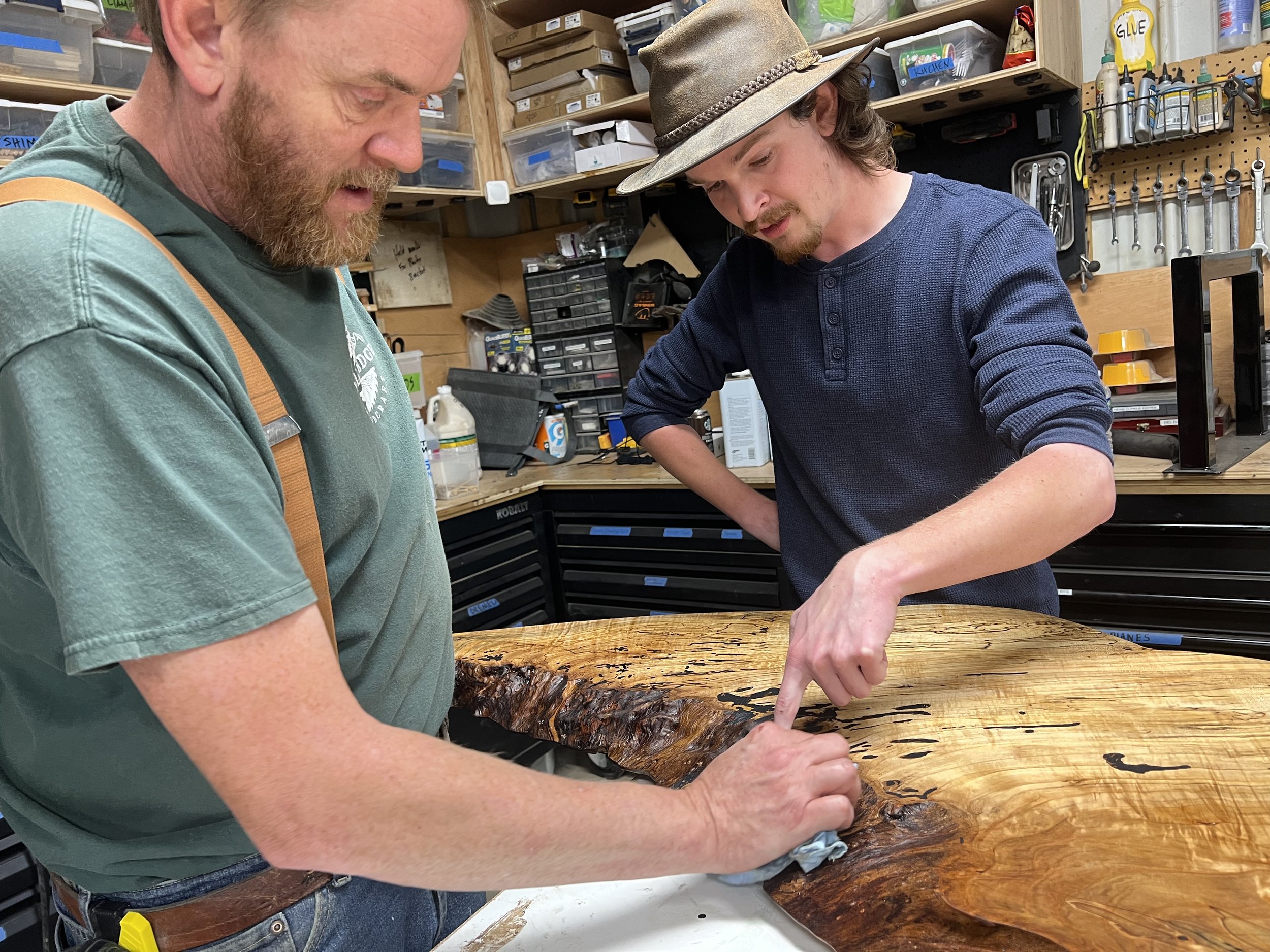Proper Wood Measuring, Marking and Finishing Tips and tricks
Woodworking requires anyone to be able to do the proper measuring and marking on the wood. In fact, the success of a project largely depends on your precision to make the necessary measurements. I don’t think there is a woodworker that doesn’t understand the pain and frustration that comes with accidentally taking a poor measurement and ending up with a miss-cut part. Measuring twice and cutting once, is surely a sage bit of advice that most of us learn. However, below are the measuring and marking rules that one must need to know before getting started with woodwork.
WOOD MEASURING TIPS
Measuring Less than 1 Inch
If you are going to make measurements that are less than 1 inch, it is important that you use a rigid metal ruler. A tape measure flexes so the measurement that you will make might not be accurate.
Always use the same Tape Measure throughout a Project Construction
Always use the same tape measure throughout the construction of your project. The problem with using different tape measures is that there might be discrepancies in the graduations of the measurements. When cutting the wood to length, be sure to square one end before you make the mark. This is to ensure that you don’t make any mistakes with the measurements.
Avoid using Riveted end of the Tape Measure
The riveted end on the tape measure can cause inaccuracy in the measurement over time. So avoid using the riveted end and line up the 1” mark with the square end of the workpiece.
Wood Marking Rules and Tools
Pencils
Use a mechanical pencil for all marking tasks as this leaves a fine narrow line that does not leave any doubts about where you need to cut. You can also use a lead pencil but make sure that it is sharp. Use a square to mark your wood pieces for the length. You can have a straight mark that is perpendicular to the edge of the blade.
Knives
Knives are one of the most essential tools in a woodshop. They are used for various tasks, such as marking Tenon shoulders and cutting cardboard templates. Pocket knives, box cutters; utility knives with a retractable blade are all useful in a woodworking shop.
Awls
These are sharp, pointed instruments with a variety of uses. They differ in the fineness of their tips/points and the thickness of their shafts. For example, a fine-pointed awl is useful for marking out joinery and scribing lines while a broad-pointed awl is good for making pilot holes in wood prior to drilling.
Wood Finishing Tips and Techniques
Most wood projects are treated on the surface, either for protection or to improve appearance, or both. Some wood types have natural properties that give them adequate protection without additional treatment, for instance, Western Red Cedar and Teak. But most woods suffer if they are left untreated. They fail at varying speeds with time, depending on their type and application. Some wood species rot quickly if exposed to weather untreated. Some used indoor furniture may not suffer in strength or durability, but their pores become filled and clogged with dirt thus making them unattractive.
There are various treatment methods available but the continuous invention of new synthetic materials makes it difficult to keep pace with them. However, most are treatments for reviving existing finishes, rather than applications for bare wood. Wild Edge Woodcraft provides all the basic information required to differentiate between maintenance treatments and surface coatings for your just-completed projects.
The right finishing that you use for your wood pieces can make or break the finished product. It is therefore important to equip yourself with valuable information on how to create the best finishes for your woodworking projects.
Surface Coatings
Surface coatings provide a clear finish. They also provide added protection to the wood. Examples of surface coatings include varnish, lacquer, and shellac.
Pigmented Finishes
Pigmented finishes are not transparent and they look like paint. Examples of pigmented finishes include black lacquer. They also exist in natural finishes so they mimic the color of natural wood.
Penetrating Finishes
As the name indicates, penetrating finishes penetrate the wood grain instead of setting on the surface thus it leaves a very natural look. It also provides low luster on wood.
6 Useful Techniques to Add the Finishes on Your Work Pieces
Waxing and Oiling
Waxing is a great technique that you can use to add a finish to your wood. It is labor intensive but it provides extra protection to the wood. Waxing can also be used to rejuvenate old finishes on wood. Although labor intensive, it does not require too much maintenance. Waxing can be applied over the penetrating finish.
The trouble with oil polishing is that it takes too much time. The attractive gloss seen on the enormous old tables in some fancy halls is the result of years of use and polishing. If an oil finish appeals to you, a suitable mixture for today’s needs is two parts of linseed oil to one part of turpentine. Before applying it, warm the solution by placing its container in hot water because heating it directly over a flame could burn the oil. A little color can also be added to the oil if needed.
Staining
Staining is used to improve the natural color of the wood. This creates uniformity in the wood. This is especially great if the wood has an inconsistent appearance. The beauty of the grain and the general appearance of the wood can be enhanced by staining. Generally, the stain is used to deepen the color of the wood but there are exceptions; for example, a light-colored wood can be blackened to look like ebony.
Glazing and Toning
Glazing and toning are two techniques that are used to provide highlights to the wood as well as improve the color depth of the wood. These two techniques are also used to add an aged look to the wood.
Pickling and Liming
Pickling and liming are two types of traditional finishing that are used in highlighting the grain of the wood. This is achieved by using two different (contrasting) colors which include the base color and another color that is rubbed into the grain.
Bleaching
This technique is used to lighten the color of the wood or to remove any discoloration brought about by the presence of moisture. However, it must be kept in mind that this process cannot remove dyes and stains. Wood can be bleached with commercial solutions intended for fabrics, but the solution should be much more concentrated. The quantity of the solution will have to be determined experimentally. As a matter of fact, not all woods need bleaching. This treatment is not very common in most workshops. Apart from its use in adjusting the uneven color, bleach is also used to enhance certain woods by producing special effects like ‘honey maple’ and ‘amber walnut’.
Distressing
This technique is used to give aged look and texture to the wood. It can be done by sanding the finish after it has been dried or rubbing a chemical solvent to remove some of the paint.


